Abstract
In order to assess the factors of malaria vectorial capacity and the daily reproduction rate, separate consideration is given to data from Kankiya, Northern Nigeria, concerning the incidence of vector—man contact (the man-biting rate), the vector's expectation of infective life, as reflected by the proportion of parous mosquitos under certain conditions, and the vector's man-biting habit, comprising the frequency of feeding and the human blood index. The main difficulty in the assessment of each of these factors was shown to be that of representative and adequate sampling, especially in a sprayed area. In order to compensate for deficiencies in the Kankiya data, especially with regard to the daily and cyclic survival-rates, the gonotrophic cycle and the effective sporogonic period, more complete published data on an Anopheles gambiae population in East Africa were examined, and extrapolations were made from these data in spite of the consequential risks involved.
The results of the analysis show that the spraying of an area with DDT reduced the malaria vectorial capacity of Anopheles gambiae sp. B (the main vector of Plasmodium falciparum in the area) by an over-all factor of about 23 times. Nevertheless the basic reproduction rate of the disease is estimated to have averaged slightly over 20 in the sprayed area during the 6 months of the main transmission season. This is consistent with an observed recovery in the parasite rate, which had been reduced to a very low level by regular mass drug administration through the preceding dry season.
The analysis was a tentative exercise in “epidemiological entomology” and it is suggested that in the postgraduate teaching of tropical hygiene, the epidemiological approach to entomology should be preferred to the classical morphological-bionomical approach.
Full text
PDF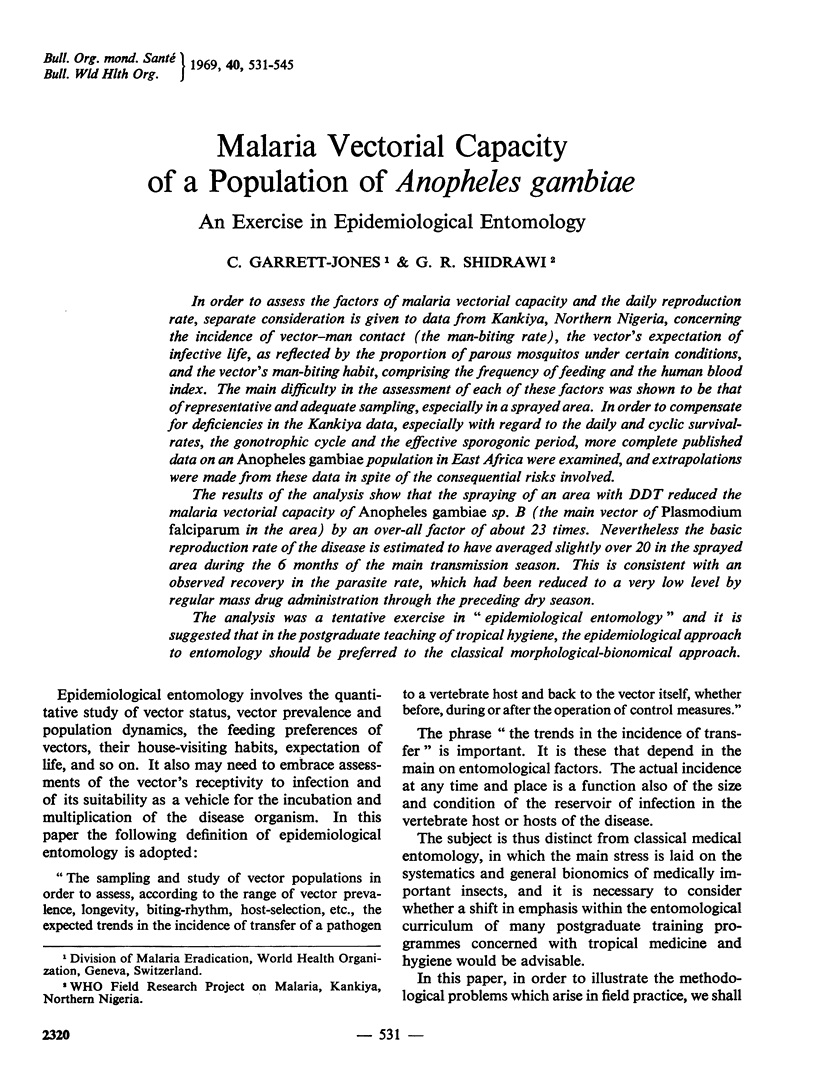

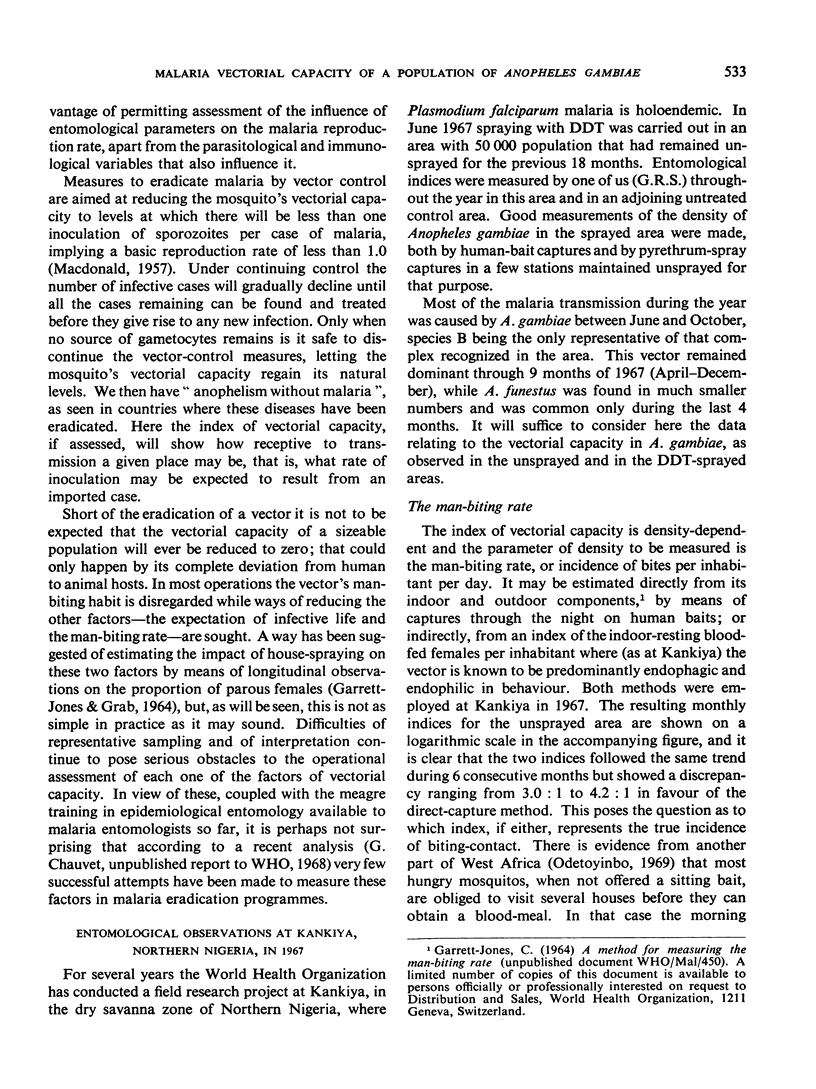
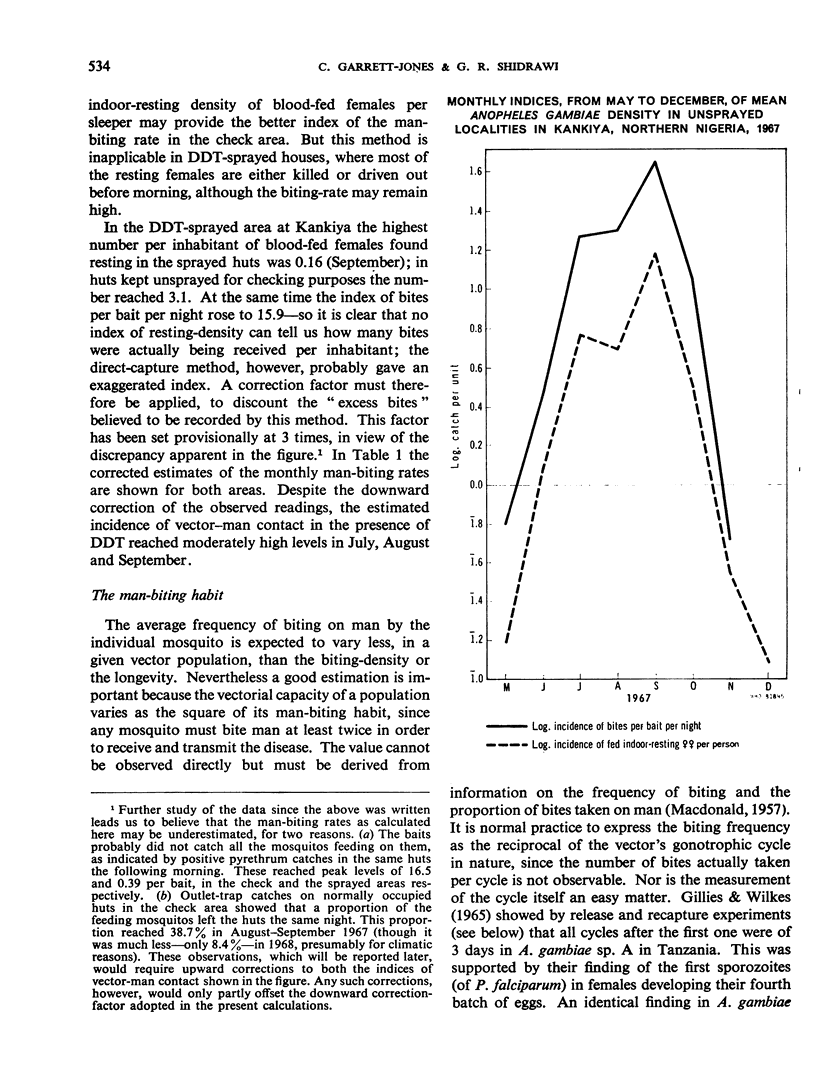

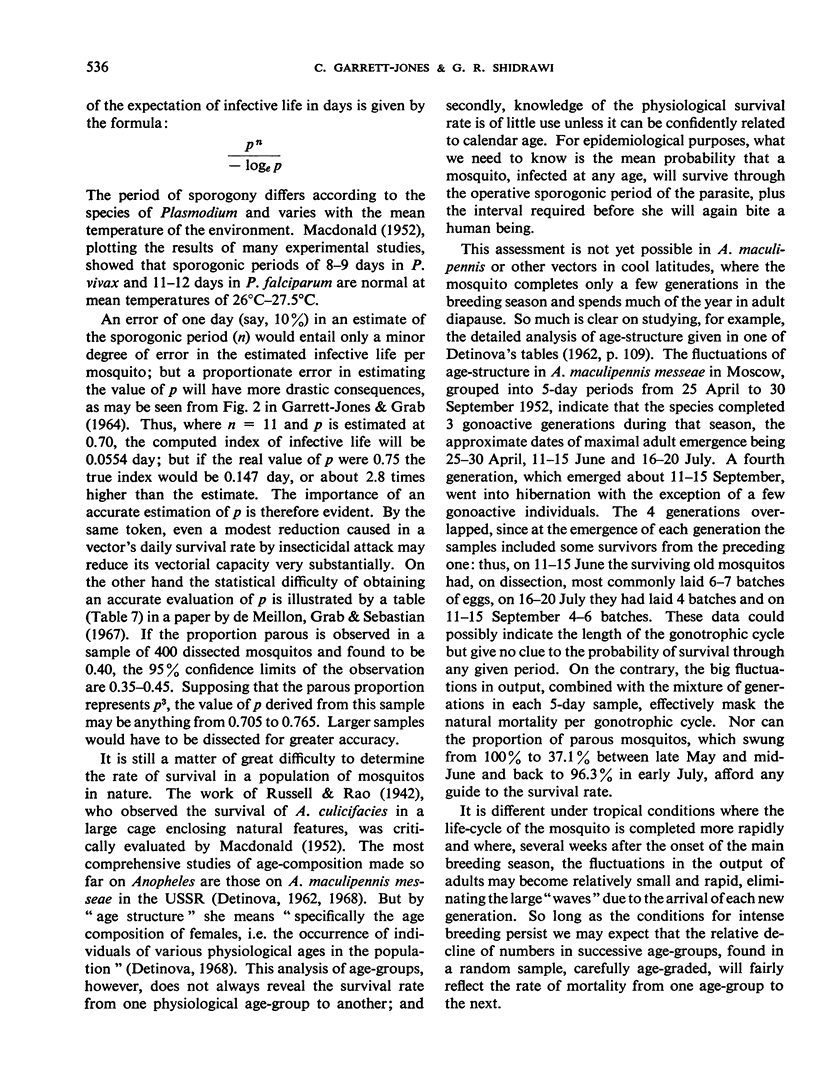
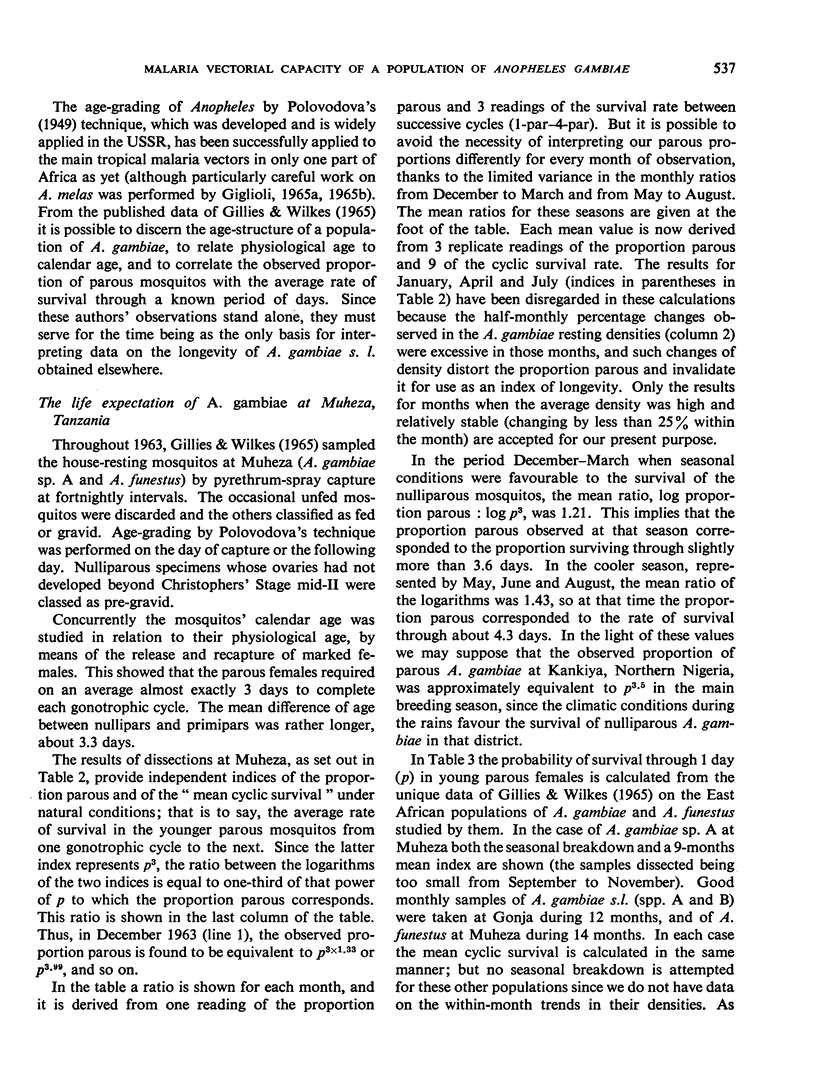
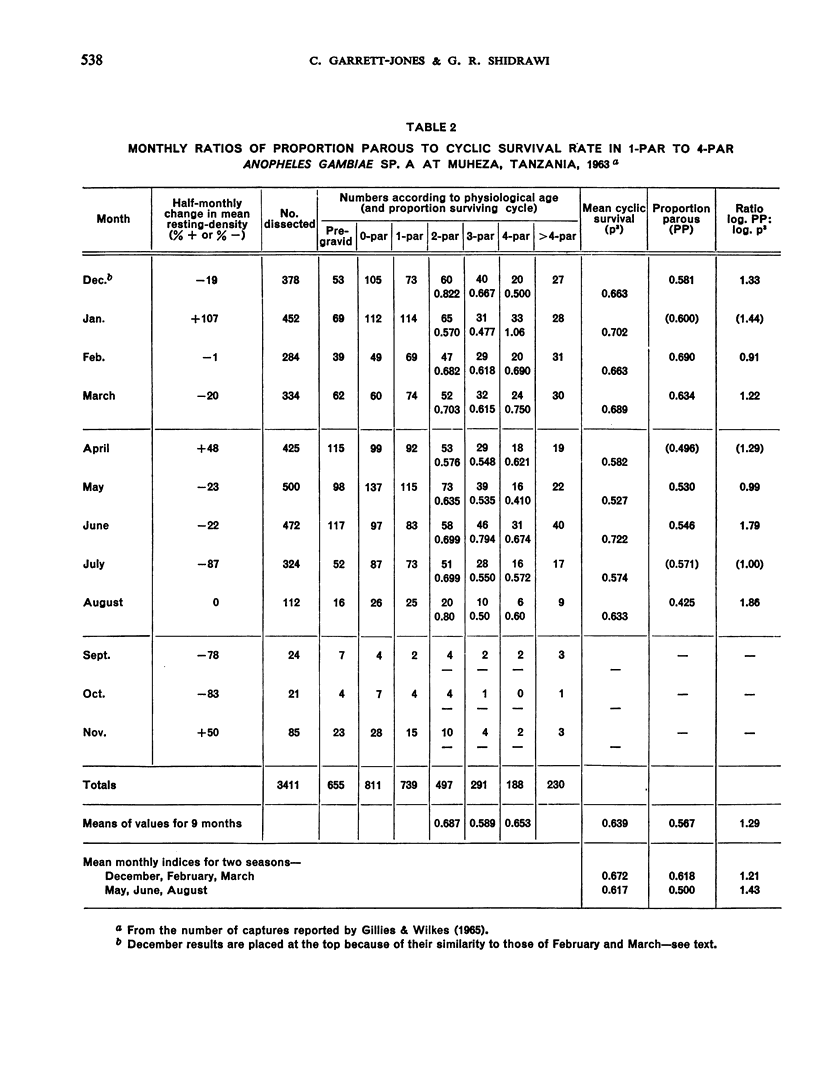

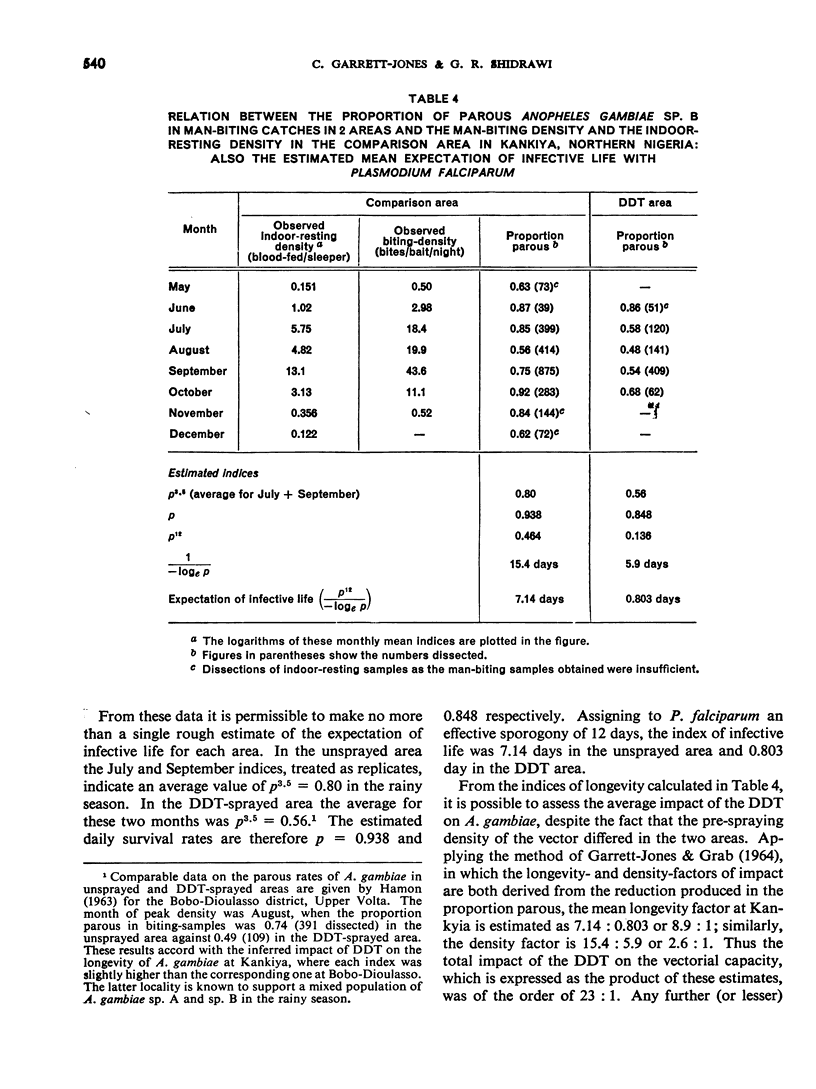


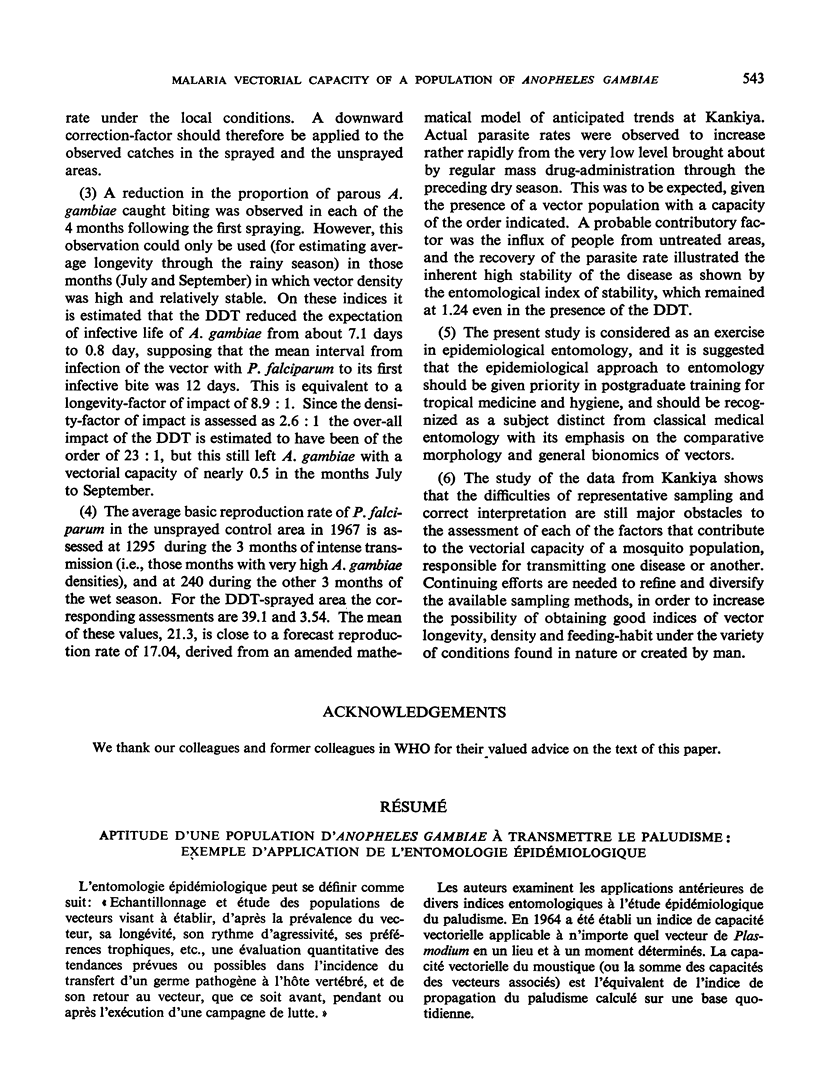
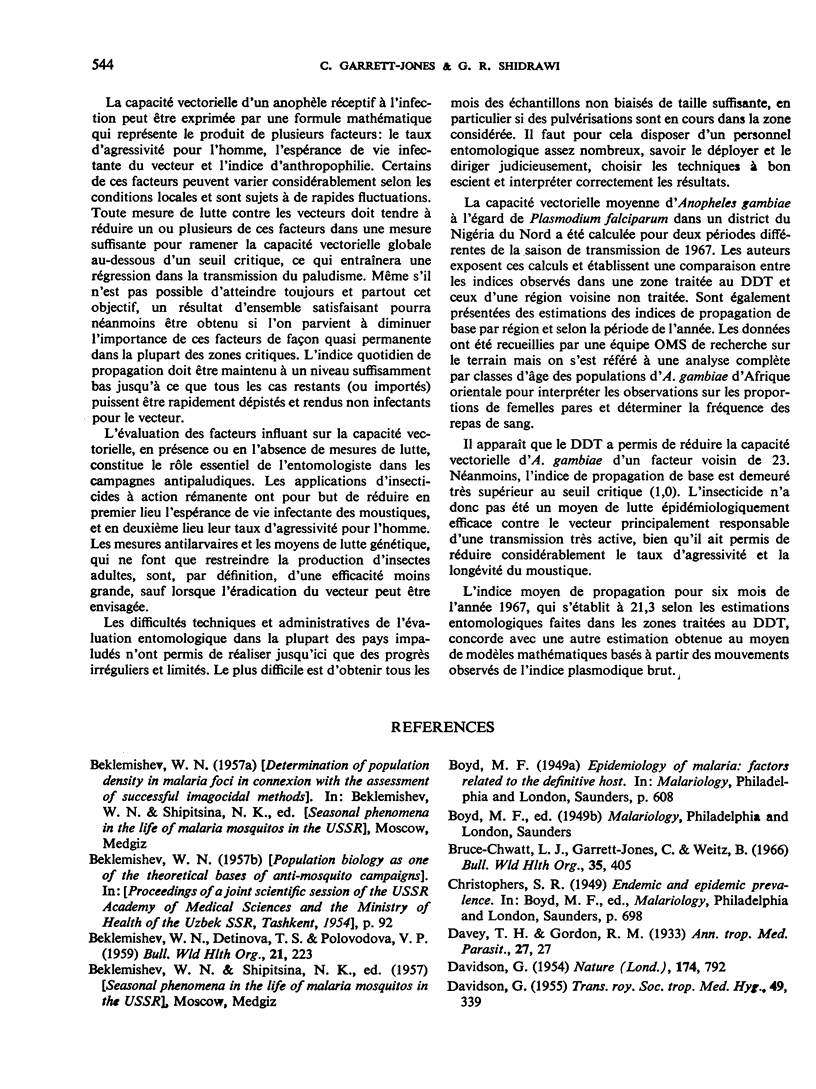

Selected References
These references are in PubMed. This may not be the complete list of references from this article.
- BEKLEMISHEV W. N., DETINOVA T. S., POLOVODOVA V. P. Determination of physiological age in anophelines and of age distribution in anopheline populations in the USSR. Bull World Health Organ. 1959;21:223–232. [PMC free article] [PubMed] [Google Scholar]
- Bruce-Chwatt L. J., Garrett-Jones C., Weitz B. Ten years' study (1955-64) of host selection by anopheline mosquitos. Bull World Health Organ. 1966;35(3):405–439. [PMC free article] [PubMed] [Google Scholar]
- DAVIDSON G., DRAPER C. C. Field studies of some of the basic factors concerned in the transmission of malaria. Trans R Soc Trop Med Hyg. 1953 Nov;47(6):522–535. doi: 10.1016/s0035-9203(53)80005-2. [DOI] [PubMed] [Google Scholar]
- DAVIDSON G. Estimation of the survivalrate of anopheline mosquitoes in nature. Nature. 1954 Oct 23;174(4434):792–793. doi: 10.1038/174792a0. [DOI] [PubMed] [Google Scholar]
- DAVIDSON G. Further studies of the basic factors concerned in the transmission of malaria. Trans R Soc Trop Med Hyg. 1955 Jul;49(4):339–350. doi: 10.1016/0035-9203(55)90056-0. [DOI] [PubMed] [Google Scholar]
- DETINOVA T. S., GILLIES M. T. OBSERVATIONS ON THE DETERMINATION OF THE AGE COMPOSITION AND EPIDEMIOLOGICAL IMPORTANCE OF POPULATIONS OF ANOPHELES GAMBIAE GILES AND ANOPHELES FUNESTUS GILES IN TANGANYIKA. Bull World Health Organ. 1964;30:23–28. [PMC free article] [PubMed] [Google Scholar]
- GARRETT-JONES C., GRAB B. THE ASSESSMENT OF INSECTICIDAL IMPACT ON THE MALARIA MOSQUITO'S VECTORIAL CAPACITY, FROM DATA ON THE PROPORTION OF PAROUS FEMALES. Bull World Health Organ. 1964;31:71–86. [PMC free article] [PubMed] [Google Scholar]
- GARRETT-JONES C. PROGNOSIS FOR INTERRUPTION OF MALARIA TRANSMISSION THROUGH ASSESSMENT OF THE MOSQUITO'S VECTORIAL CAPACITY. Nature. 1964 Dec 19;204:1173–1175. doi: 10.1038/2041173a0. [DOI] [PubMed] [Google Scholar]
- GARRETT-JONES C. THE HUMAN BLOOD INDEX OF MALARIA VECTORS IN RELATION TO EPIDEMIOLOGICAL ASSESSMENT. Bull World Health Organ. 1964;30:241–261. [PMC free article] [PubMed] [Google Scholar]
- GILLIES M. T. The recognition of age-groups within populations of Anopheles gambiae by the pre-gravid rate and the sporozoite rate. Ann Trop Med Parasitol. 1954 Mar;48(1):58–74. doi: 10.1080/00034983.1954.11685599. [DOI] [PubMed] [Google Scholar]
- Gillies M. T., Wilkes T. J. A study of the age-composition of populations of Anopheles gambiae Giles and A. funestus Giles in North-Eastern Tanzania. Bull Entomol Res. 1965 Dec;56(2):237–262. doi: 10.1017/s0007485300056339. [DOI] [PubMed] [Google Scholar]
- MACDONALD G. The analysis of equilibrium in malaria. Trop Dis Bull. 1952 Sep;49(9):813–829. [PubMed] [Google Scholar]
- MACDONALD G. The measurement of malaria transmission. Proc R Soc Med. 1955 Apr;48(4):295–302. [PMC free article] [PubMed] [Google Scholar]
- Macdonald G., Cuellar C. B., Foll C. V. The dynamics of malaria. Bull World Health Organ. 1968;38(5):743–755. [PMC free article] [PubMed] [Google Scholar]
- SWAROOP S. Forecasting of epidemic malaria in the Punjab, India. Am J Trop Med Hyg. 1949 Jan;29(1):1–17. doi: 10.4269/ajtmh.1949.s1-29.1. [DOI] [PubMed] [Google Scholar]
- TRAPIDO H., AITKEN T. H. Study of a residual population of Anopheles L. labranchiae Falleroni in the Geremeas Valley, Sardinia. Am J Trop Med Hyg. 1953 Jul;2(4):658–676. doi: 10.4269/ajtmh.1953.2.658. [DOI] [PubMed] [Google Scholar]
- de Meillon B., Grab B., Sebastian A. Evaluation of Wuchereria bancrofti infection in Culex pipiens fatigans in Rangoon, Burma. Bull World Health Organ. 1967;36(1):91–100. [PMC free article] [PubMed] [Google Scholar]


